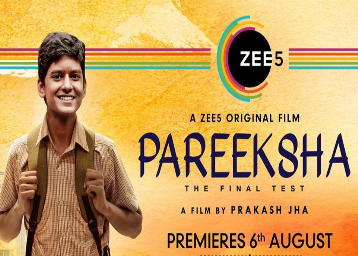Director: Ayesha Sood
Streaming on: Netflix
Probably the most powerful scene from ‘Indian Predator’, Netflix’s latest true crime documentary about a serial killer, is from its third and final episode. We see an elderly man break down and the reason will give you the shivers. He’s afraid he’s spoken too much in front of the camera and thinks he might incur the serial killer’s wrath for ratting him out.
The serial killer in question is Chandrakant Jha, who became notorious in the 2000s for placing the mutilated body parts of his victims at exactly the same spot after each murder- right in front of Tihar Jail in Delhi. He also taunted the police by leaving abusive letters for them to find along with the bodies and by making anonymous phone calls from public booths and openly challenging them to investigate.
The structure of the series is no different from many other true crime documentaries. The first two episodes invest significant time in telling the story of Chandrakant’s capture. The third episode is almost entirely dedicated to a character study, or should I say character assassination, of the killer.
We hear the story from the perspective of police officers, journalists, attorneys, scientists and even Chandrakant’s family and friends. The investigative portions take you into a world of sleuthing, psychological profiling, police informants and forensic evidences. These were definitely the most thrilling parts of the show. It almost puts a smile to your face when you realize how much of a role chance plays in the solving of crimes such as these. Some of the plot twists, if you could call them that, were right out of a nostalgic Sriram Raghavan film.
The series then goes on to broach a larger subject of migrants and the difficulties they are forced to endure in big cities. Stereotyping is rampant and there seems to be inherent bias towards members of certain communities. Such a toxic social milieu deals a double blow-it breeds crime on one hand and denies equitable access to the justice system on the other. I thought this boiling issue was analyzed superbly here, especially set against the backdrop of Delhi, one of Asia’s largest cosmopolitan melting pots.
This is not to say any of the gruesome crimes committed by Chandrakant were remotely justified. What do you even make of a serial killer who takes photographs of his tied-up victims and maintains an album? He was a monster who craved attention and destroyed many families. His story is one that’s worth being told.
Overall rating: 3/5










